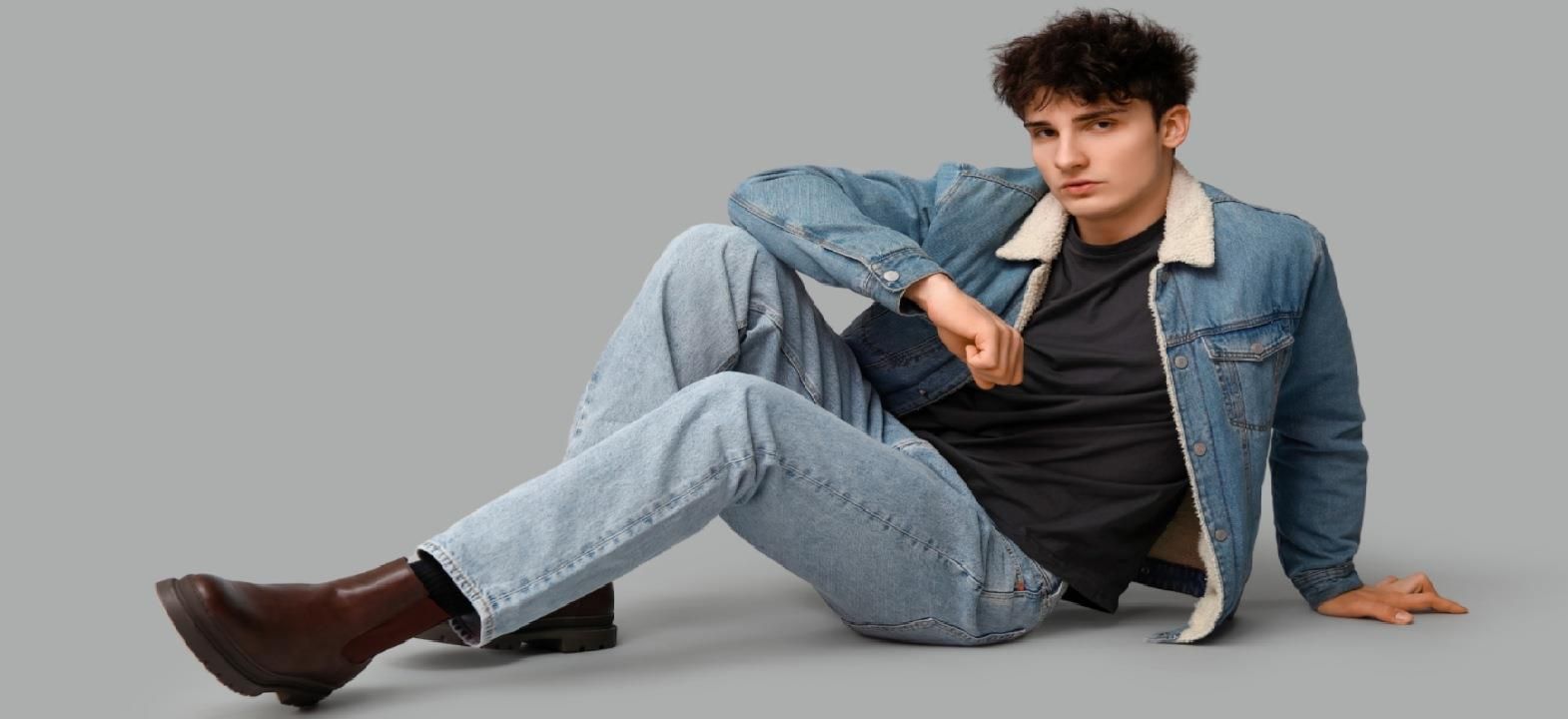Fashion
Fever Pitch: How the Olympics Brought Fashion and Sports Closer Than Ever This Year

The love affair between fashion and sport reached a fever pitch this year.
While top athletes continued to take pride of place in front rows and set trends with their style, brands and groups were battling to become sponsors of sporting events around the world.
There was plenty on the scoreboard, from a raft of ambassador announcements and uniforms for national teams to Formula 1 and tunnel style confirming their positions as arenas for visibility.
And occasions were plentiful this year, thanks to tentpole events like the Super Bowl in February, the Euro 2024 soccer championship in June as well as annual championships.
Throughout the year, it was clear that fashion has become a competitive sport for many athletes.
Case in point: the NBA and WNBA tunnel walkouts, which see fashion and sports fans tuning in for the athletes’ unique looks and are a way to launch partnerships as much as showcase players’ personalities.
The biggest playing fields of all were the Paris 2024 Olympic and Paralympic Games, dubbed “the fashion Olympics,” with LVMH Moët Hennessy Louis Vuitton as a premium sponsor and opening and closing ceremonies that felt like runways.
Making the most waves was the uniform of the Mongolian delegation, designed by homegrown label Michel & Amazonka. They were not alone in making their mark in Olympic fashion history.
Houses big and small answered the call from sports to dress the 204 delegations participating, from LVMH-owned Berluti dressing the delegation of host nation France and Ralph Lauren for Team USA to Ugandan streetwear label IGC Fashion upcycling hundreds of garments into outfits for their breakdancing compatriots and dressage rider and designer Alexa Fairchild’s designs for the Belgian national team.
All the athletes were hoping to accessorize with a crowning jewel: medals designed by Chaumet for this edition’s Olympians and Paralympians. As for Louis Vuitton, it made the trunk to store the precious prizes as well as the trays and medal-bearer uniforms.
LVMH also sponsored a cadre of seven French athletes in conjunction with its headliners Louis Vuitton and Dior. The latter also separately tapped a group of 15 female athletes in the lead-up to the Games.
Who Won Gold With the Paris 2024 Games?
“This has hands down been the summer of the well-dressed athlete, with fashion brands taking full advantage of the power of social media to connect with fans,” commented Jay Prasad, chief executive officer of Relo Metrics, a California data firm that bills itself as a sports marketing measurement company that uses AI to power its data analytics.
And for brands, it was a path to victory — in terms of visibility.
Relo noted that all social media posts that linked a brand and a national team performed on average 21 times better than brand-only content.
Winning gold in social media visibility was LVMH, followed by Ralph Lauren and Lululemon.
Overall, LVMH’s premium partnership with the Olympics raised the bar for fashion brands, as well as the profile of its own houses, in terms of media impact value measured by Launchmetrics.
Dior came in first place, garnering $53 million in MIV throughout the games, with much of it generated by Celine Dion and Lady Gaga wearing the LVMH-owned brand during the opening ceremony.
Ralph Lauren and Skims also scored with their Team USA partnerships, while Oakley leveraged a campaign with soccer player Kylian Mbappé for buzz during the Games.

Skims
For spectators, there was plenty on offer, too, as brands tapped into the Olympic spirit for capsules and limited-edition products.
The impact of the Olympic Games on sports-related fashion purchases is tangible. Separate reports by marketplace StockX and end-to-end AI search platform Algolia in August pointed out the details of the spike in consumer interest in primary and secondary market shopping in support of their nation’s team and top athletes.
Athletes as Fashion Stars
The year also confirmed the importance of athletes as ambassadors for fashion brands.
Fashion has taken a lot of heat — and much of it well deserved — for being focused too much on surface and not enough on substance. And associating with sports brings out some of the industry’s better angles, wrote WWD’s Evan Clark in July.
While so much of fashion marketing relies heavily on attractiveness, using athletes to make the pitch helps brands hit other notes, leaning into a certain indomitable spirit, performance, competitiveness and more.
Brandon Brown, president of the Sports Marketing Association, called sport “that unique medium” that resonates around the world.
“Athletes and sports today convey values of excellence, passion and high standards, which echo those of our craftsmen who, every day, carry out each gesture with precision to produce the world’s most beautiful products,” Antoine Arnault, head of communication, image and environment at LVMH, told WWD.
“From a strategic point of view, our collaborations and partnerships in sport or with athletes allow us to reach a wider audience than with more ‘classic’ ambassadors or campaigns,” he continued.
So appointments came fast and thick throughout the year and athletes continued to shine at fashion weeks.
The year kicked off with golf, where Jason Day became the first ambassador of Malbon, the streetwear-inspired golf brand founded by Stephen and Erica Malbon in 2017. He was soon followed by LPGA pros Charley Hull and Jeongeun Lee (Lee6), as well as Jesper Parnevik, a Swedish professional golfer now playing on the PGA Tour Champions league.
There were tie-ups with sports giants, like Reebok tapping NFL star Julian Edelman and WNBA’s Angel Reese, who will go on to have her signature sneaker in 2026.

After the Games, boxer and Olympic gold medalist Imane Khelif brought a $4.4 million in echo MIV for her attendance of the Bottega Veneta spring 2025 show in Milan. Tennis champion Jannik Sinner also brought in $263,000 at Gucci during the week.
At New York Fashion Week, gymnast Sunissa Lee and track and field athlete Gabby Thomas teamed up to bring in a cumulated $636,000 in MIV for the Tommy Hilfiger show.
On Race Tracks, Courts and Runways
In 2024, fashion also showed its love for Formula 1, as the skyrocketing number of sponsorships between brands and teams, drivers and the sports itself showed.
British driver Lewis Hamilton was named brand ambassador by Dior in July and will also be guest designer of a new lifestyle collection for the French house.

Lewis Hamilton in the Dior campaign.
Rafael Pavarotti/Courtesy of Dior
And despite the motorsport’s long-running association with luxury, its now-vast reach means that more brands are tapping into its popularity.
According to data from Trendalytics, labels such as Abercrombie & Fitch, Reiss, PacSun and Palm Angels as well as luggage brand Tumi topped the list for popularity, as did LVMH-owned Swiss watchmaker Tag Heuer.
And tennis didn’t sit on the bench.
Lacoste had its return to the runway under creative director Pelagia Kolotouros in March, an extension of its Roland-Garros partnership until 2030 in June and its arrival as a premium partner of the Rolex Paris Masters tennis tournament in October.
Gucci spotlighted its historic link to the sport dating to the ‘70s. First, Italian ace Jannik Sinner appeared on the Roland Garros court sporting a Gucci x Head all-white leather duffel bag — the result of a one-off collaboration — and fronted a campaign. Then the Italian luxury house dropped a capsule collection.
Meanwhile, Nike collaborated with tennis superstar Naomi Osaka and fashion designer Yoon Ahn to create competition kits celebrating Osaka’s return to the U.S. Open.

Robert Prange/Getty Images
On the sailing front, Loro Piana was the official title sponsor of the 71st edition of the Giraglia Regatta, five days of coastal racing along the shores of Saint-Tropez and Italy that took place in June.
And after making a splash at the Olympics, Louis Vuitton headed to bigger waters with the America’s Cup. In an interview with WWD, Pietro Beccari, chairman and CEO of Louis Vuitton, said sports are very much “in the air” — and closer than ever to fashion and luxury. Prada once again was among the challengers for the America’s Cup, losing in the semifinals to the Ineos of Britain team.
Meanwhile, Barcelona-based beauty and fashion group Puig was the primary sponsor of the very first America’s Cup solely for women, launching a race series it aims to continue in the years ahead.
September brought the growing convergence with sports in focus, as it emerged as a standout trend in the spring 2025 shows, according to fashion search engine Tagwalk.
Overall, sportswear had a 25 percent increase in spring 2025, compared to spring 2024, according to fashion search engine Tagwalk.
That didn’t amount to full-on sportswear looks but a mix-and-match approach of athletic-inspired pieces peppered into an everyday wardrobe.
In the mix were parkas with sequined dresses at Burberry, windbreakers styled with midi skirts like at Miu Miu, rugby polos, baseball caps incorporated into preppy outfits like at Ralph Lauren, or sneakers worn with dresses like at Loewe or tailored trousers like at Gucci.
Driving this trend were brands like Dior, Miu Miu and Casablanca, Tagwalk found.
Looking Ahead
The industry at large plans to continue the winning streak in 2025 and beyond.
Agache, the holding group controlled by the family of luxury magnate Bernard Arnault, revealed in October it had entered into exclusive negotiations to buy a majority stake in the Paris FC soccer club.
That same month, Arnault’s LVMH revealed that it had inked a deal to be the global luxury partner of Formula 1 for the next 10 years, starting with the 2025 season.
Billed as the most prestigious motor racing competition, the motor championship series drew 6 million race attendees and a cumulative TV audience of 1.5 billion last year across 24 races. The average audience per race is around 70 million, but some may top the 100 million mark, while the social media tally of the competition has passed 60 million fans across all its platforms.
Meanwhile, soon-to-be-former Formula 1 sponsor Rolex turned its eye toward another moto racing competition: sailing. In November, the watchmaker said it would be the title partner for 10 years of SailGP, a championship cofounded in 2018 that sees national teams race in identical high-tech, high-speed, 50-foot foiling catamarans in 14 events around the world.
Chanel will also take to the water. The French fashion house became the title sponsor and official timekeeping partner of the oldest major sporting event in the U.K., an annual boat race held in the spring between Oxford and Cambridge universities that will be known as the Chanel J12 Boat Race from next year onward.
So no time to cool down as the matches play on.










